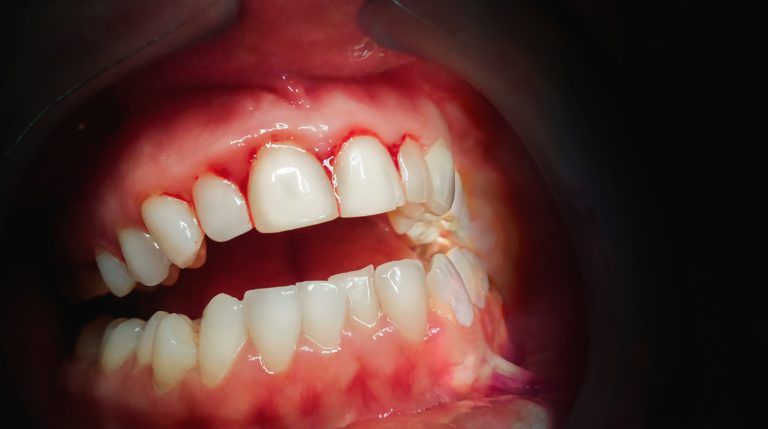Understanding Gum Disease

It’s not uncommon to hear the phrase “gum diseases like gingivitis” in ads for toothpaste and floss on TV, but have you ever heard them discuss the various types of gum disease? For most patients, gingivitis is the only term they’re aware of, and in many cases, they’re unaware of any other forms existing. The truth is there are six different types of gum disease classified, ranging from the relatively benign and easy to treat to ones that can cause lasting damage to your jawbone and gums.
Six Types Of Gum Disease
Gingivitis: This is the most common form of gum disease, and is indicated by the typically firm and pink gums presenting as swollen, red, sore, and prone to bleeding. Along with being the most common, it’s also the least severe form of periodontal disease. Typically caused by poor oral hygiene it’s easily reversed by beginning proper care. With the help of your dentist and some time spent taking care of your mouth and gums, it will set itself right.
Periodontitis: When gingivitis goes untreated it changes into a more severe form known as Periodontitis. At this point, your condition has moved beyond affecting just the gums and is now affecting your teeth, getting below your gum line, and can begin attacking your jawbone. Chronic halitosis (bad breath), the formation of gingival pockets (which can become abscesses), and a receding gum-line are the most common signs.
Aggressive Periodontitis: This is a form of periodontitis that advances quickly, attacking the tissue of your gums and the ligaments that hold your teeth in place. At this stage, it’s common for there to be advanced bone destruction that is progressing quickly.
Chronic Periodontitis: This condition shows itself through bone loss and inflammation of the gums and teeth. Deterioration takes place at a slow but steady pace.
Systemic Periodontitis: This form of periodontitis is the result of other factors in the patient’s body, including heart disease, diabetes, and respiratory disease. While proper dental care can help hold off the long-term results of this condition, treatment of the primary cause is necessary.
Necrotizing Periodontal Disease: This condition typically presents in those patients who suffer from conditions like HIV, immunosuppression, and malnutrition. In these patients the living tissue of the tissues in their mouth is dying, necrotizing, rather than being eaten away by disease. This condition causes structures like the alveolar bone, periodontal ligaments, and gingival tissues to be deprived of necessary nutrition, causing them to die.
It’s clear that oral health is a vital part of ensuring you have a healthy mouth and beautiful teeth, though these steps may not be able to protect you in all cases. If you have any of these conditions or are concerned that you might, it’s time to stop in and talk to the experts at Southwest Family Dentistry in Lake City, FL. Your appointment with Dr. John Batlle will help clarify the state of your oral health and lead to a consultation on what can be done to help restore and protect your health for years to come.

